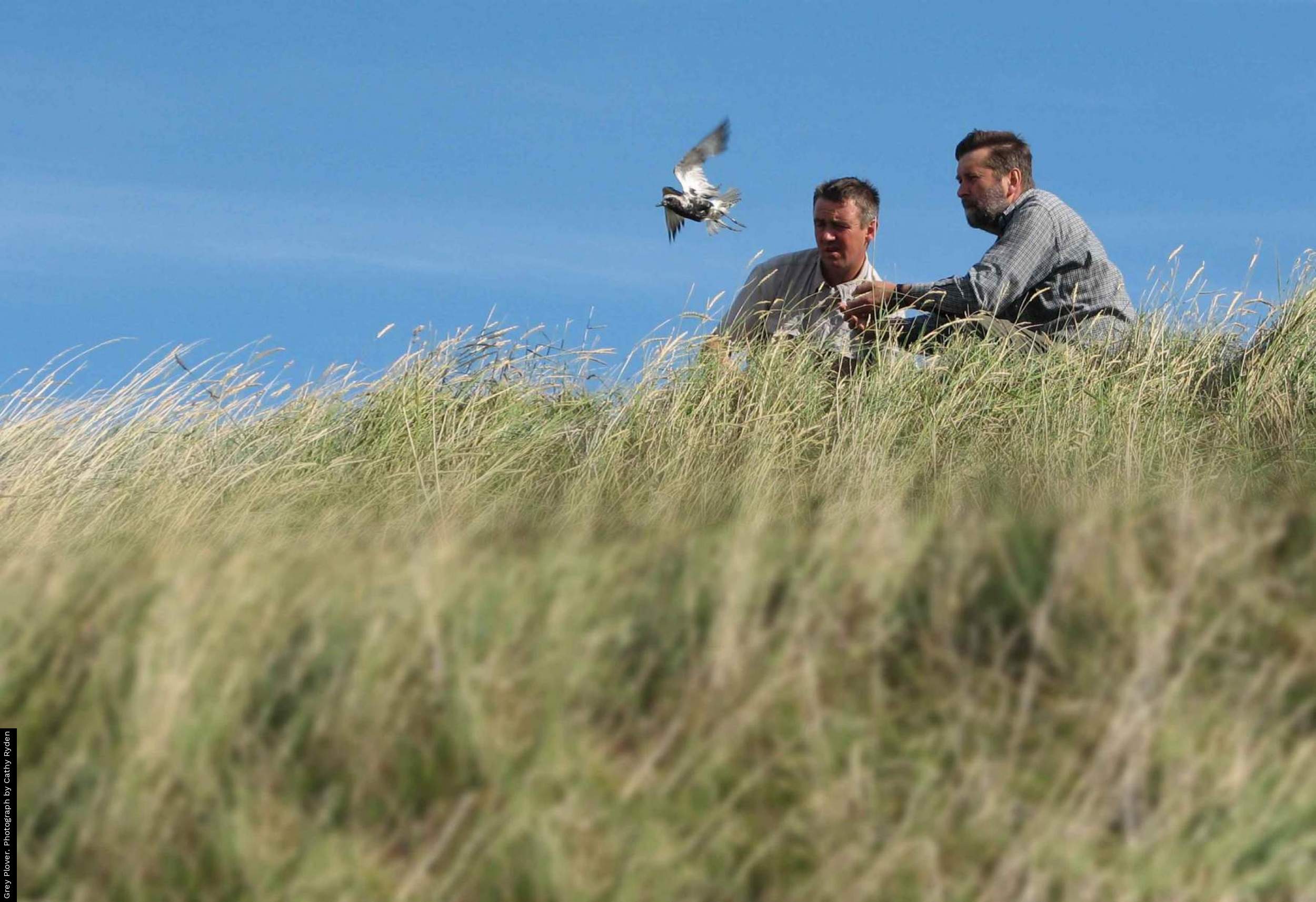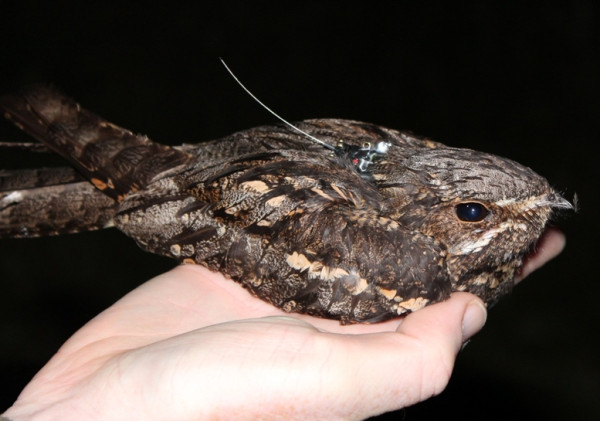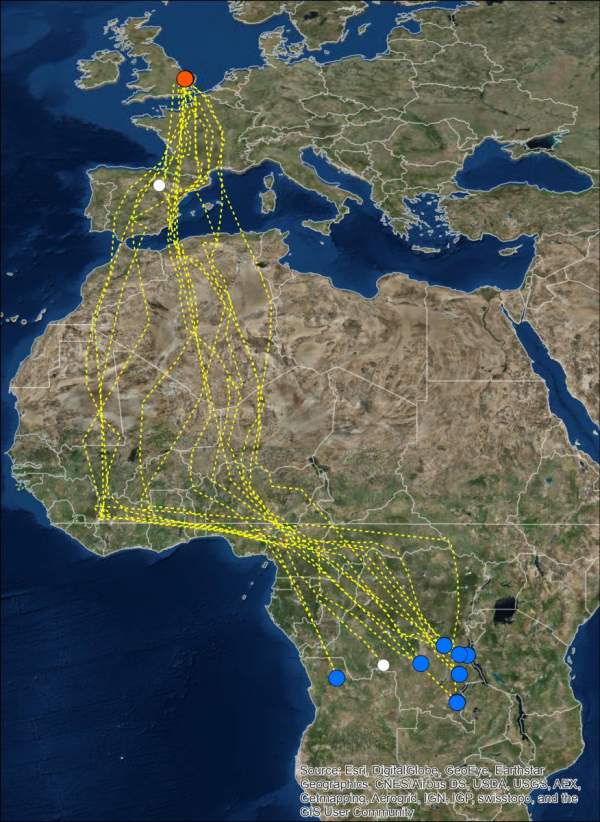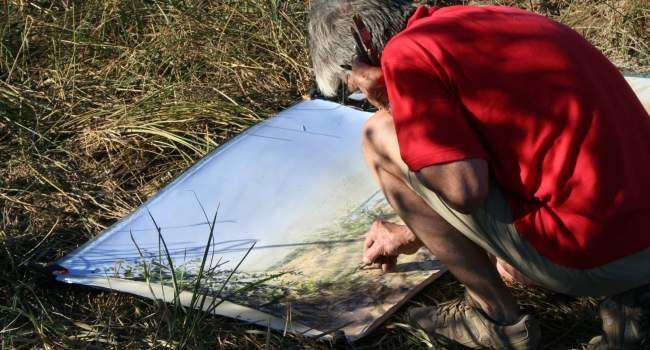Nightjar Tracking Project
Migration tracking
Geolocators were first used on Nightjar by Biotrack in 2008, which yielded the first migration and wintering data for three individuals, albeit at a rather coarse resolution (+/- 100 km). In 2011, a BTO study collected more complete infomation on migration for a further three individuals, which contributed to the first European collaborative study to investigate migration.
Orange = breeding site, Blue = wintering site, White = last recorded location in autumn
and Yellow dashed lines = migration routes
Now, high-resolution, GPS tracking devices have become small enough to be reliably used to track migration, however the birds still need to be re-caught in order to retrieve and download the data!
In 2015, eleven Nightjars were fitted GPS devices by BTO researchers, in Thetford Forest, East Anglia, followed by another 22 deployed in 2017 and 15 deployed in 2021–22. Data from nine individuals have now been retrieved (see Map below), providing the most detailed and accurate information ever on the migration and movements of British Nightjars.
Initial findings reveal that autumn migration starts during September and is quite direct, taking around 6–8 weeks to reach the wintering sites; occupied from November through to March. The wintering locations obtained support the unexpected finding from the earlier Geolocator studies, confirming that the main wintering area is located in the scrub dominated grasslands to the south of the equatorial rainforests, primarily within the Democratic Republic of Congo. Previously, it was thought that Nightjars only wintered in eastern and West Africa, south of the Sahara.
A more detailed analysis of the GPS tracking data is in progress and further papers are in preparation.
The geolocator work has been published as:
Evens, R., Conway, G.J., Henderson, I.G., Creswell, B., Jiguet, F., Moussy, C., Sénécal, D., Witters, N., Beenaerts, N. & Artois, T. 2017. Migratory pathways, stopover zones and wintering destinations of Western European Nightjars Caprimulgus europaeus. Ibis.
Home range and habitat use tracking
During summers 2014 to 2017, BTO and Natural England staff embarked on a ground-breaking study using novel GPS tags, to examine the movements of breeding Nightjars in Thetford Forest and at Dersingham Bog NNR. The GPS tags, developed by Pathtrack, record hundreds of precise locations at five minute intervals over many nights, providing the most detailed information on foraging movements and habitat use ever obtained for the species; prodiding data for over 50 individuals.
In 2016, moth abundance and species composition was examined at Thetford Forest nest sites and foraging sites, as revealed by GPS tracking. This information demonstrates the importance of specific foraging habitats which are often located many kilometres away from nest sites.
These results will greatly improve our understanding of species' habitat requirements and better inform management and conservation efforts in heathlands and plantion forests.
Acknowledgements
These studies would not have been possible without the generous support provided by the Shoreham & District Ornithological Society, Mark Constantine, Forestry Commission England, British Birds, Biotrack and the British Ornithologists' Union; and with money from a legacy from Clarice Dawson. We would like to acknowledge the support and assistance provided by the many dedicated volunteers and members of Thetford Forest Ringing Group and Friends of Thetford Forest.
Find out more
For further information please contact greg.conway [at] bto.org (Greg Conway) or ian.henderson [at] bto.org (Ian Henderson).








Share this page